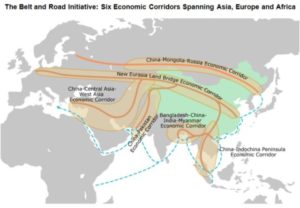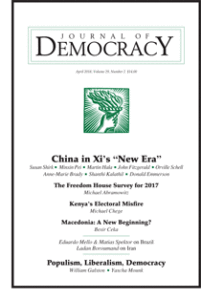The United States and China are locked in a geopolitical competition that will largely determine the rules, norms, and institutions that govern international relations in the twenty-first century, according to the Center for a New American Security (CNAS).
 “Core components of this competition are occurring outside traditional military and defense arenas, with China pursuing a range of activities to undermine U.S. power and influence,” it adds, focusing on two elements of China’s power play: its use of economic coercion; and its efforts under the rubric of the Belt and Road Initiative to construct a new geopolitical and economic order.
“Core components of this competition are occurring outside traditional military and defense arenas, with China pursuing a range of activities to undermine U.S. power and influence,” it adds, focusing on two elements of China’s power play: its use of economic coercion; and its efforts under the rubric of the Belt and Road Initiative to construct a new geopolitical and economic order.
It is misleading to call the Belt and Road “China’s Marshall Plan” as it is much more ambitious, the CNAS contends.
 “In 2017 dollars, the Marshall Plan cost the United States about $122 billion. Between 2014 and 2017, looking at both construction and investment, Beijing has devoted around $340 billion. And that number continues to grow,” it notes.
“In 2017 dollars, the Marshall Plan cost the United States about $122 billion. Between 2014 and 2017, looking at both construction and investment, Beijing has devoted around $340 billion. And that number continues to grow,” it notes.
Furthermore, the Marshall Plan was “ultimately about empowerment,” the authors add.
“It aimed to rebuild war-torn economies and strengthen fragile democracies. The Belt and Road is a vehicle to advance Chinese influence, create leverage, and it is ultimately harmful to good governance and human rights.”
 “If the United States does not rise to this occasion, the result could be a China-led order that is less free and democratic, less open to U.S. trade and investment, more hostile to U.S. security alliances, and governed by raw Chinese power rather than agreed-upon rules and institutions,” the CNAS adds. RTWT
“If the United States does not rise to this occasion, the result could be a China-led order that is less free and democratic, less open to U.S. trade and investment, more hostile to U.S. security alliances, and governed by raw Chinese power rather than agreed-upon rules and institutions,” the CNAS adds. RTWT
Shanthi Kalathil describes how China’s growth-without-liberalization agenda is changing the conversation on development, while Minxin Pei assesses China’s newly assertive foreign policy in the April 2018 issue of the National Endowment for Democracy’s Journal of Democracy.







